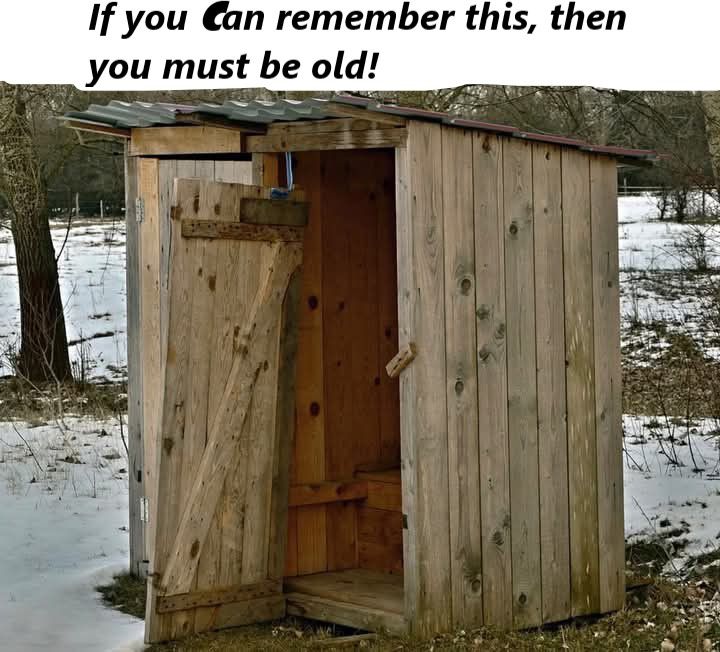In the not-so-distant past, a small wooden structure stood proudly behind homes, farms, and roadside stops. It was a necessity, a luxury, and a part of daily life. Before modern plumbing revolutionized sanitation, the humble outhouse was the primary bathroom solution for millions of people. Today, it’s a relic of the past, a reminder of simpler times, and a symbol of resilience.
The outhouse was a simple yet effective design, typically constructed from wood, with a bench seat and a hole that led to a pit below. Some were single-seaters, while others had multiple holes to accommodate more users. The iconic crescent moon cutout on the door was not just for decoration; it improved ventilation and, in some cases, distinguished women’s outhouses from men’s.
Life with an outhouse was not glamorous, but it was an improvement over going in the woods. However, it came with its own set of challenges. Rain or shine, you had to brave the elements to answer nature’s call. At night, you’d grab a lantern or flashlight and carefully navigate the dark outdoors. And then there were the unwelcome visitors – flies, spiders, and the occasional snake.
Despite the inconveniences, outhouses remained the best available option for sanitation until modern plumbing changed everything. By the early 20th century, advancements in plumbing technology made indoor bathrooms more accessible and practical. As cities and rural areas adopted indoor plumbing, outhouses quickly became obsolete.
However, some outhouses still exist today, albeit in limited numbers. Campgrounds, remote cabins, and national parks still rely on outhouses or modern versions of them. Historic homes and museums preserve outhouses as a glimpse into life before modern amenities. And in some rural areas, outhouses are kept as decorative elements or nostalgic tributes to the past.
The outhouse may be a relic of the past, but it lives on in stories, folklore, and comedy sketches. It’s a reminder of simpler times, of resilience, and of the importance of sanitation. Next time you visit a historic site or an old homestead, keep an eye out for a forgotten outhouse still standing, waiting to tell its story.
The outhouse may be gone, but it’s not forgotten. It’s a symbol of a bygone era, a reminder of how far we’ve come in sanitation and convenience. And who knows? Maybe one day, we’ll appreciate the simplicity and charm of the humble outhouse.


